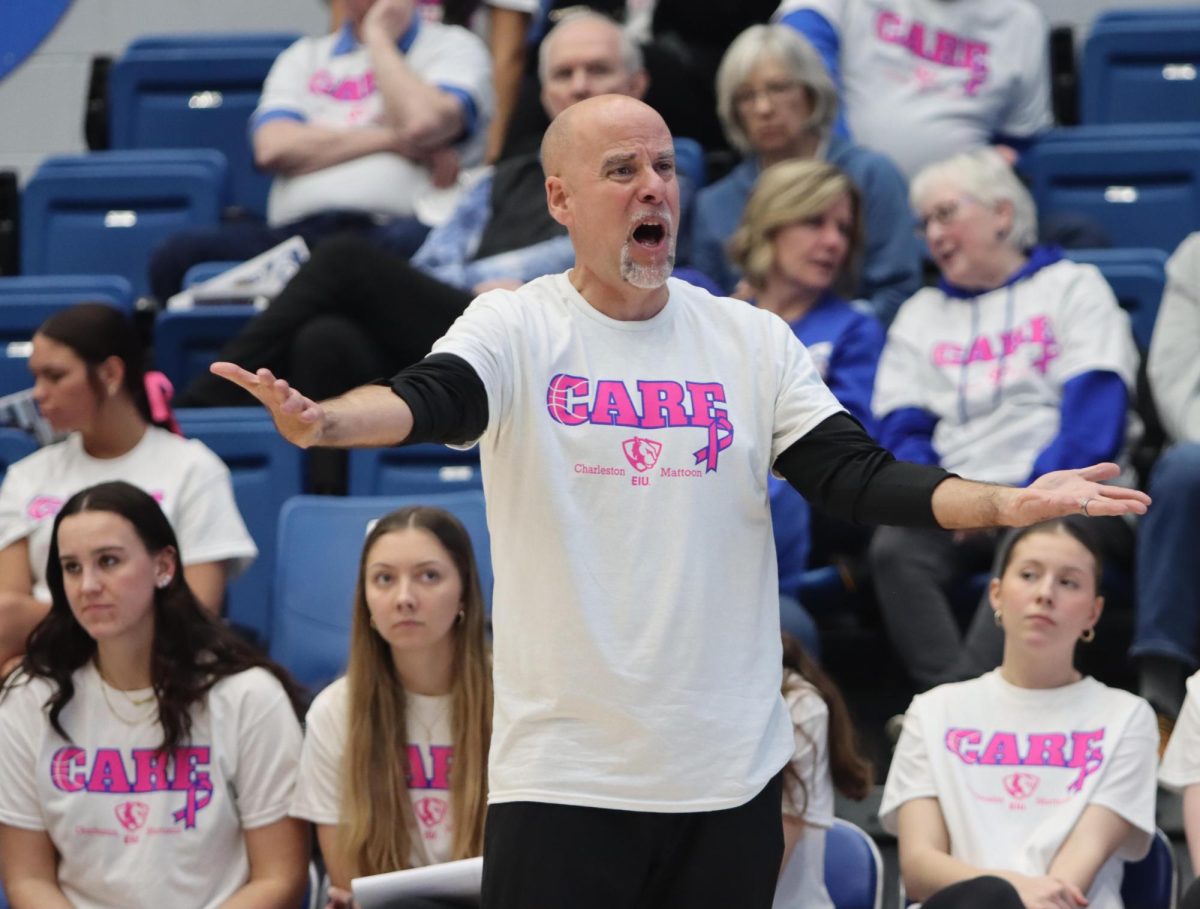Garden continues with grace
Some day Venus and her three graces – in panther form – will lay in Eastern’s study garden.
Steve Malehorn, greenhouse manager, has been working on a sculpture of a female panther with three kittens, which he hopes will watch over the garden.
Eastern’s study gardens are nestled between the life science building and the Doudna construction. They are the gardens out side of the Thut Greenhouse.
Malehorn explained that before Venus took on the characteristics of Aphrodite, she was the Roman Goddess of fertility for humans and the garden.
The name for the sculpture is more than perfect, as the study garden has in the past been unofficially termed, “make-out park.”
It’s also a place where boyfriends will propose to their girlfriends, Malehorn said.
Malehorn has been working on the clay part of the sculpture for the past two years. He hopes to have it cast in bronze, but will need $5,000 to $7,000 to complete the project.
Finding the funding for the project could be tricky, as the garden receives no allocated funding from the university. It’s supported completely by private donations from the faculty, students, alumni and retired faculty.
Malehorn acquires his plants through a network of friends to the garden.
“If I have an idea of a plant I want, I ask around,” he said.
Since Malehorn assumed responsibility for the study garden in 1998, he’s been reworking the garden’s design.
This year is the second year of three where he’s implementing his new design.
“Every time you come out here, it’s going to be a little bit different,” he said. “I want an environment that changes, that draws people back.”
Several smaller gardens actually comprise the overall study garden.
If a student walked through the garden starting from the greenhouse’s front and turning the corner, on the right would be two different gardens on each side of the sidewalk.
Malehorn said plants in these two gardens like lots of sun. Annuals and prairie plants are the main resident folia in these two gardens.
Turn left at the cherry tree and follow the path to the cement overhang, the student will find eight whiskey barrels. The right barrels house examples of common plants that can be bought at Wal-mart. Plants living in the left barrels originate from aquatic, marshy, and wetland environment.
Malehorn added the barrels because he said he wanted to have an example of container gardens.
Down the stairs and heading toward the life science building, Malehorn has planted woodland and native plants.
“The environment changes from the forest edge to the full forest shade,” Malehorn said about how the garden is arranged.
To the right of the sidewalk, are more marshland plants. To achieve the optimum conditions for these plants, Malehorn buried four bathtubs. The tubs help the dirt retain water longer, therefore mimicking the environment factors in which the plants grow best.
“Gardening is a process rather than a procedure,” Malehorn said. “The experience lets you understand plants better, than if you were to point to plants in a book for a certain display.”
The unexpected – like four buried bathtubs – is the joy of gardening, Malehorn said.
One plant visitors don’t expect to find is the corn growing alongside the greenhouse, right after the sunny garden of annuals.
“There are people who don’t recognize corn,” Malehorn said.
He overhears conversations of people who look at the corn and say, “My isn’t the bamboo getting tall?”
“I get more remarks about the corn because it’s unexpected,” he said.
Besides corn, there are 308 other plant species in the study gardens. Inside the greenhouse, Malehorn has 671 species for a total of 980 species.
“And it will keep growing literally and figuratively – I hope,” Malehorn said.
The corn plant, however, is not doing well because the first weekend after school started, drunken students cut through the garden and ripped its leaves.
But long after those students graduate, the garden, like Malehorn said, will still grow.
“It’s the success of getting plants to grow – if it works, then yea – if not, then pull it out and plant something different.”












































